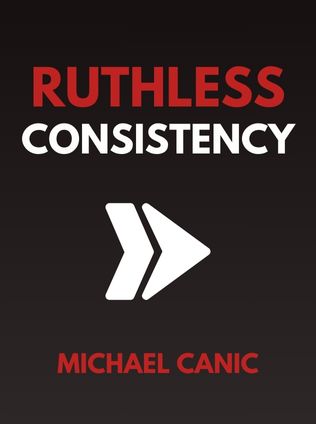
Ruthless Consistency
How Committed Leaders Execute Strategy, Implement Change, and Build Organizations That Win
By Michael Canic
Published 09/2020
About the Author
Michael Canic, Ph.D. is the president of Making Strategy Happen, a consulting firm that helps committed leaders of mid-market companies turn ambition into strategy and strategy into reality. Previously, he managed the consulting division at The Atlanta Consulting Group and held a leadership role at FedEx, where his district became the most recognized in the Americas for service quality. A compelling speaker, Canic has delivered over 600 presentations to audiences on four continents, including through Vistage Worldwide, the world's largest organization of CEOs and business leaders.
Main Idea
In "Ruthless Consistency," Michael Canic identifies the three surprising reasons most strategic change initiatives fail and offers the antidote: ruthless consistency. Leaders who develop the right focus, create the right environment, and build the right team consistently are those whose organizations win. This book provides an intuitive yet comprehensive model for success, making it a must-read for every leader aiming to implement change successfully.
Table of Contents
- Introduction
- The Reality
- The Right Focus
- The Right Environment
- The Right Team
- The Right Commitment
- Conclusion
Introduction
The failure rate for strategic change initiatives (SCI) is alarmingly high, ranging from 70 to 90 percent for various types of projects. The cost of these failures is staggering, with IT project failures alone costing up to $3 trillion a year globally. Repeated failures create a culture of failure within organizations, making success seem unattainable. To overcome this, leaders must embrace ruthless consistency in their approach.
The Reality
Most SCIs fail because leaders do not have a complete picture of reality. They often send mixed messages, focus on what they do instead of what their people experience, and are not as committed as they need to be. Success requires more than just good intentions; it demands ruthless consistency in developing the right focus, creating the right environment, and building the right team.
First Principle: What Matters More Than Anything You Do Is Everything You Do
Success hinges on aligning every aspect of the organization with the desired outcome. Ruthless consistency means everything is aligned with the organization’s purpose and intentions. Leaders must:
- Develop the right focus.
- Create the right environment.
- Build the right team.
Consistency is not about robotic repetition but ensuring all actions align with strategic goals.
Second Principle: What You Do Is Not as Important as What Your People Experience
Leadership is validated by what employees experience and how they perform. To achieve strategic change, leaders must understand their employees’ perspectives and ensure they feel empowered and valued. This requires empathy and seeing through their eyes. Leaders should reframe their thinking to understand that it doesn't matter what they are telling their employees if the employees are not hearing it. It’s about what the employees perceive, believe, and feel.
Third Principle: You’re Not as Committed as You Need to Be . . . Yet
Commitment goes beyond stating intentions; it requires setting specific goals, communicating effectively, providing necessary resources, and holding people accountable. Leaders must examine and align every touchpoint with their goals to increase the likelihood of success. They need to persevere when the change isn’t happening quickly enough and ensure that they are as committed as they need to be to see the SCI through to success.
The Right Focus
Developing the right focus involves clearly articulating what the organization must achieve, why it must achieve it, and how it will achieve it. This focus should be integrated into a strategic management process comprising four phases:
- Assess: Develop a compelling Case for Change.
- Position: Define strategic positioning.
- Plan: Outline critical SCIs.
- Implement: Manage implementation systematically.
Strategic management is about ongoing execution, not just planning.
Embrace the Joy of Pain
To drive change, organizations need a compelling Case for Change that addresses both gain and pain. This helps overcome complacency and psychological inertia.
“If we don’t optimize our product portfolio, then revenues and margins will continue to shrink, and our future will be at risk.” — Michael Canic
Sign up for FREE and get access to 1,400+ books summaries.
You May Also Like
The Subtle Art of Not Giving a F*ck
A Counterintuitive Approach to Living a Good Life
By Mark MansonRich Dad Poor Dad
What the Rich Teach Their Kids About Money - That the Poor and Middle Class Do Not!
By Robert T. KiyosakiHow To Win Friends and Influence People
The All-Time Classic Manual Of People Skills
By Dale CarnegieQuiet: The Power of Introverts
The Power of Introverts in a World That Can't Stop Talking
By Susan Cain



















